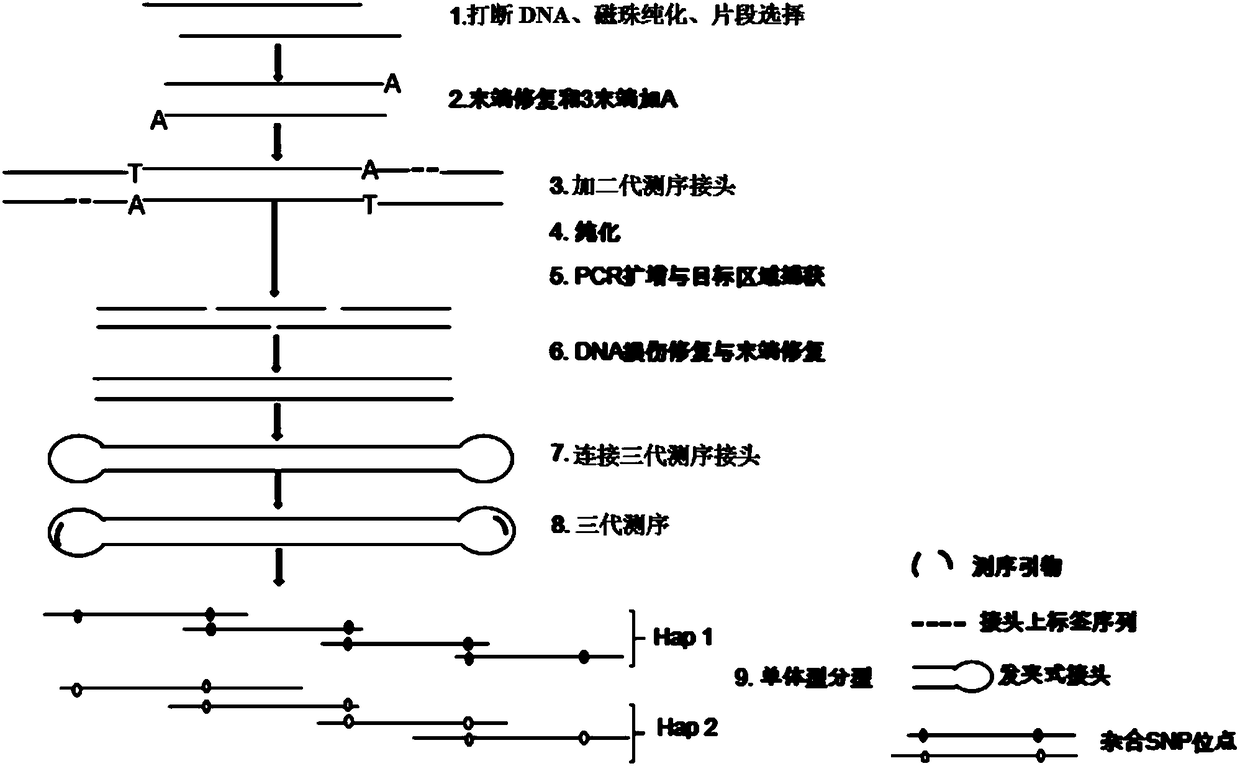Noninvasive antenatal haplotype construction method based on long fragment DNA capturing and three-generation sequencing
A construction method and haplotype technology, applied in the field of sequencing, can solve the problems of high cost of family capture and sequencing, difficulty in popularization, complex multiplex PCR operation, etc., and achieve the effects of promoting detection, reducing detection cost and avoiding influence
- Summary
- Abstract
- Description
- Claims
- Application Information
AI Technical Summary
Problems solved by technology
Method used
Image
Examples
Embodiment 1
[0056] In this example, a mother and father who gave birth to a genetic GJB2 gene mutation were recruited for non-invasive prenatal haplotype construction. The father had a c.229-230delAT heterozygous mutation in the GJB2 gene, and the mother had a c.235delC heterozygous mutation in the GJB2 gene. Genomic DNA was extracted from the peripheral blood of the father and mother, and then the 5K insert chip chip capture three-generation library and PacBio sequencing were constructed to analyze the parental single body shape analysis.
[0057] (1) Genomic DNA extraction and fragmentation
[0058] Extract 2 μg of parental genomic DNA from the sample by the salting out method. The current sample fragmentation method is the G-tube fragmentation method, and the fragmentation parameter is 6000rpm / min to fragment the sample DNA to a fragment with the main peak in the range of 10K (Note: fragmentation The effect is very important. Generally, the main peak is required to be around 10K, such...
PUM
 Login to View More
Login to View More Abstract
Description
Claims
Application Information
 Login to View More
Login to View More - R&D Engineer
- R&D Manager
- IP Professional
- Industry Leading Data Capabilities
- Powerful AI technology
- Patent DNA Extraction
Browse by: Latest US Patents, China's latest patents, Technical Efficacy Thesaurus, Application Domain, Technology Topic, Popular Technical Reports.
© 2024 PatSnap. All rights reserved.Legal|Privacy policy|Modern Slavery Act Transparency Statement|Sitemap|About US| Contact US: help@patsnap.com










